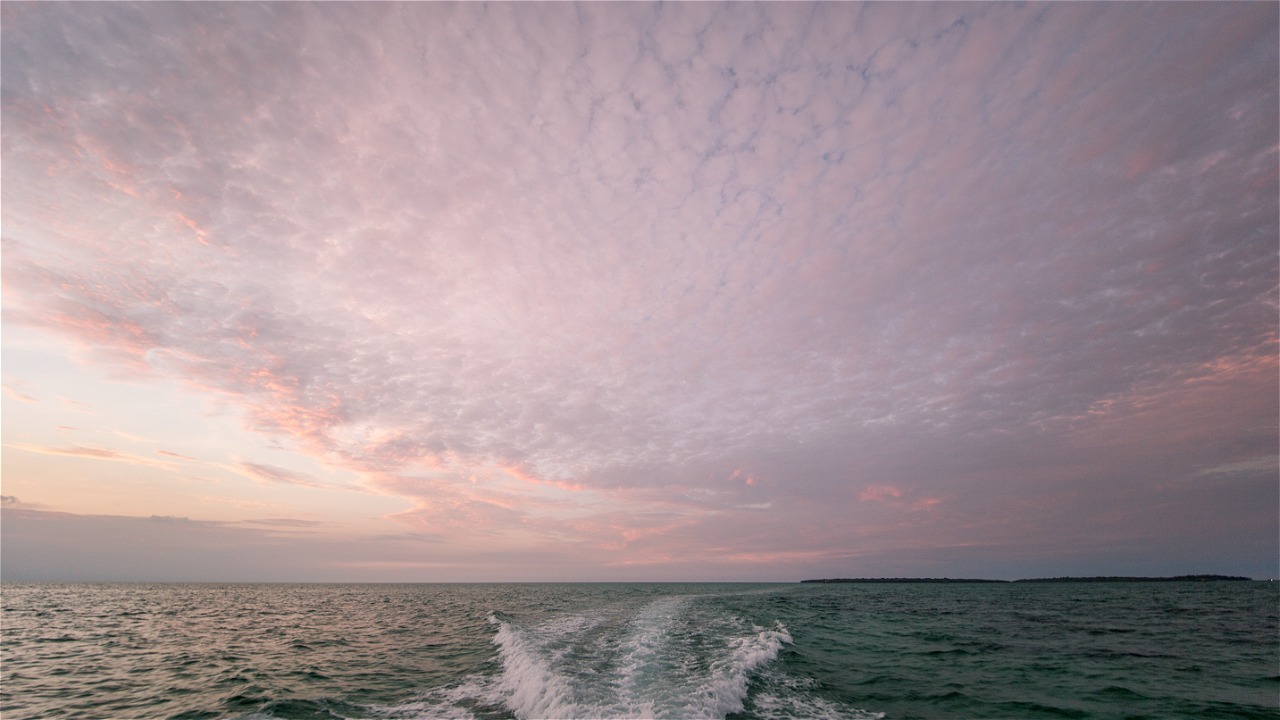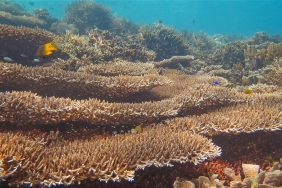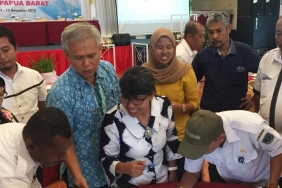KATALOKA FESTIVAL IS NOT JUST A CULTURAL EVENT, BUT ALSO A COMMITMENT TO PRESERVE THE NATURE OF THE KATALOKA COUNTRY
By: Umi Kalsum Madaul (Assistant for Responsible Marine Tourism Program, WWF-Indonesia)
A prayer and a royal flag parade opened the Kataloka Festival that day (27/12/16). Two things that were shown for the first time to the people who attended this cultural and traditional performance presented by Negeri Kataloka, a small country in East Seram Regency, Maluku.
The ambareas dance, the traditional dance of Buan Rumana Village, Kataloka was performed on the opening stage of the Kataloka Festival. A group of traditional dancers (hadrat) with lenso (handkerchief) and tifa (tambourine), the King of Kataloka, and the customary institution (saniri) of Kataloka State, and dancers from all over Gorom Island also enlivened this first festival.
Until the first day of 2017, the Kataloka Festival was filled with various traditional dances of Gorom Island, exhibitions of royal clothes and objects of historical value, as well as cultural discussions, and competitions to sing Gorom folk songs, the island where Negeri Kataloka is located. The territory of this kingdom does include parts of Gorom, Garogos, and Koon islands.
Not only rich in unique culture and customs, Negeri Kataloka is also rich in nature. The waters of Koon Island are one of the highest density reef fish spawning grounds in Eastern Indonesia - a commodity of high economic value. Not surprisingly, Koon is designated as a marine conservation area that is expected to be safeguarded together with its people.
The Regent and officials of the East Seram Regional Government who were present at the opening of the Kataloka Festival can be proud of the reflection of the Kataloka community's care and love for their region. This was clearly seen in the cultural discussion with village and hamlet officials throughout the Gorom Island sub-district, along with the saniri at Petuanan Adat Negeri Kataloka.
This cultural discussion raised the theme of restoring the customs and culture of Negeri Kataloka - which is currently almost forgotten. The ancestors of Negeri Kataloka exemplified the preservation of natural resources. For example, placing stones from the mountain along the coast to protect the beach from abrasion.
Previous kings also implemented the Ngam (sasi) system, a restriction on resource utilization through a ban on resource extraction for a certain period of time. The goal is to preserve natural resources both sea and land so that people can still enjoy the results in the future.
For hundreds of years, this mechanism has proven to encourage citizens to respect nature, locking'citizens into a position of equality in obligations and rights. Everyone is obligated to monitor the area for destructive activities and entitled to receive benefits from Kataloka's waters.
The community is expected not to forget what has been done by previous ancestors to continue to preserve the nature, culture, and customs of Kataloka Country. This discussion makes the Kataloka Festival truly not only a showcase for cultural glitter, but also an awakening of awareness of residents to protect their nature.
The Wanu Atalo'a Customary Institution (Leawana), which was founded by King Kataloka, played its best role in designing the Kataloka Festival. This event is planned to be an annual agenda of Kataloka State to promote the Gorom region and its surroundings as a tourist destination.
The 2016 Kataloka Festival was closed with an art performance in the form of the appearance of the winners of the competition singing folk songs and traditional dances of Kataloka Country. This small country will see you again at the next Kataloka Festival this year, in October or November.





